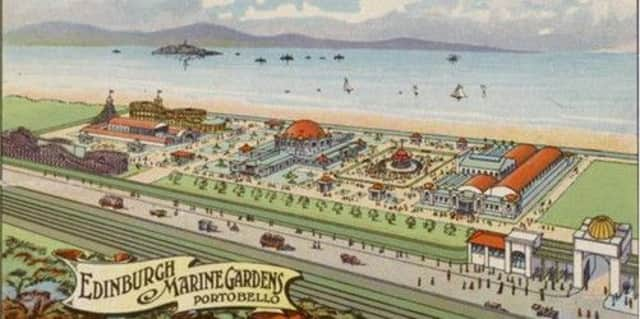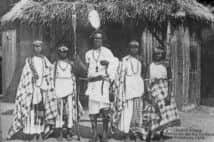Lost Edinburgh: The Marine Gardens
This article contains affiliate links. We may earn a small commission on items purchased through this article, but that does not affect our editorial judgement.


The Edinburgh Marine Gardens were advertised as “one of the most notable outdoor attractions” in the city when they first opened to the public on the 31st of May 1909. The plan to build the gardens followed the hugely successful Scottish National Exhibition held in Saughton Park which had attracted over 3.5 million visitors the year before. Ambitious local entrepreneurs spurred on by the 1908 exhibition’s massive popularity decided that its beautiful pavilions and grand halls could be preserved and relocated to a more permanent site. The Marine Gardens were located on thirty acres of coastline immediately west of King’s Road, Portobello. Admission on day one was 7d and included a return rail journey from Waverley. An astounding three quarters of a million visitors flocked to the Gardens in the first year.
The Empress Ballroom, the largest of its kind in the city at the time, was the main building of the complex. It was joined by an auditorium which played host to daily all-star variety acts. Scotland’s biggest roller-skating rink was another key feature and was hugely successful. The rest of the park boasted a broad mix of attractions including Bostock’s Circus and Zoo, The Marine Cinema and Theatre, a scenic railway, ornamental gardens with a Hampton Court-inspired maze, a sports stadium and various other amusements.
‘Human Zoo’


Advertisement
Hide AdAdvertisement
Hide AdOne of the more peculiar attractions was the Somali village inhabited by seventy natives shipped over from Africa. The Somali natives lived in a small compound of mud huts and were paid to perform mock fights with spears accompanied with “uncouth cries and the beating of tom-toms”. Their purpose was simply to provide exotic entertainment to the park’s visitors. Although it is incredibly hard to imagine today, such human-zoos were all the rage across Europe during the Victorian and Edwardian eras.
During the First World War, the park was closed and a great number of its buildings demolished as it was converted for use by the military as a temporary barracks. The Marine Gardens eventually reopened but many of its attractions were gone for good. Along with the ever popular ballroom, the sports stadium had been retained and was briefly used by Leith Athletic as their home ground. A bumper crowd in excess of 20,000 would witness Leith Athletic lose 3-0 to a Jimmy McGrory-inspired Celtic at Marine Gardens in 1931. Speedway motor-cycle racing also attracted large audiences with an impressive 34,000 in attendance at a World Championship match in the late 1930s.
Following the arrival of the Second World War, the area around Seafield Road was utilised once again by the military. The old ballroom, amusement park and sports stadium were removed and the Marine Gardens as an entertainment complex was lost forever.
In 1962 Edinburgh Corporation Transport opened the Marine Garage bus depot on the site which exists to this day. All remaining buildings were demolished in 1966 and there is now no evidence left of the once immensely popular Edinburgh Marine Gardens.
• David McLean is the founder of the Lost Edinburgh Facebook page